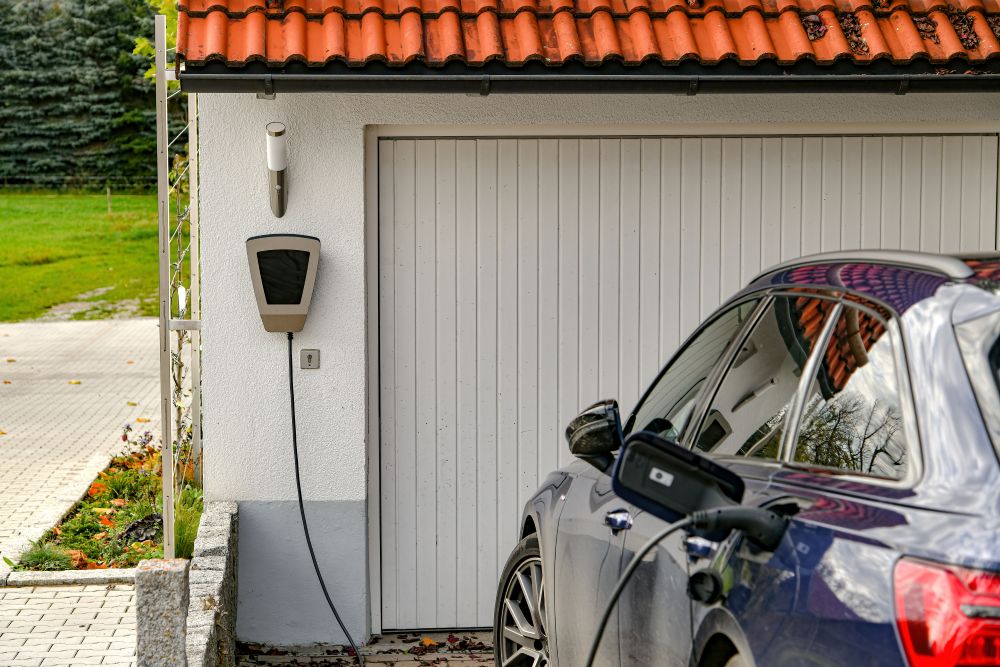Setting up a home electric vehicle (EV) charging station is an exciting step for any EV owner. It allows you to charge conveniently without relying on public stations, saving time and money. However, safety and efficiency are key to getting the most from your setup. From choosing the right location to installing proper electrical components, careful planning makes a big difference. You’ll also want to consider airflow and temperature in your garage or charging area to protect your vehicle and equipment. This guide will walk you through the essentials for a secure and efficient home EV charging station.
Choosing the Right Location
The first step in setting up your home EV charger is selecting the ideal location. Your garage or driveway is typically the most convenient spot. Make sure the area is dry, well-ventilated, and easy to access for your vehicle. Avoid placing your charger near flammable materials or in spaces prone to flooding. Consider installing a ceiling fan or other airflow solutions to keep the space cool, especially if charging generates heat over long periods. Small additions this can improve comfort and reduce heat buildup while charging your EV. Additionally, the distance from your electrical panel matters too, as longer cables may reduce charging efficiency. If you’re unsure about the best placement, consulting a licensed Tucson electrician (or similar experts from elsewhere) can help ensure your setup meets safety standards and maximizes charging performance. Proper planning now prevents safety hazards and ensures your EV is ready when you need it.
Understanding Your Electrical Needs
Before installing a charging station, you need to understand your home’s electrical capacity. Most EV chargers require a dedicated circuit, often rated at 240 volts, to operate efficiently. Consult with a licensed electrician to determine whether your current panel can handle the additional load safely. Using a professional ensures your system meets local building codes and reduces the risk of overloading circuits. Consider the amperage required for your specific EV model to achieve the fastest charging. Planning for future upgrades can save time if you buy another EV later. A secure electrical setup is essential for both efficiency and peace of mind.
Selecting the Right Charger
There are various EV chargers on the market, ranging from basic Level 1 units to faster Level 2 options. Level 1 chargers are slower and perfect for overnight charging because they use a regular 120-volt outlet. Level 2 chargers require a 240-volt outlet but provide much faster charging times. Look for chargers with safety features like surge protection, automatic shutoff, and water resistance. Choosing a charger with adjustable settings can also help you manage electricity usage efficiently. A well-selected charger ensures your EV is ready when you are without risking safety. Combine this with proper ventilation to maintain a comfortable and safe environment in your charging area.
Installing Your Charging Station
Installation should always prioritize safety and compliance with electrical codes. If you’re not experienced, hiring a certified electrician is the safest approach. They can install a dedicated circuit, secure the charger, and test the system to ensure it works correctly. Make sure cables are neatly organized and avoid creating trip hazards. Positioning the charger so that it’s easily reachable from your vehicle port improves convenience. A fan nearby can help circulate air during long charging sessions, reducing heat buildup in an enclosed garage. Proper installation extends the life of both your EV and charging equipment.
Maintaining Safety and Efficiency
Once your home EV charging station is installed, ongoing maintenance keeps it running smoothly. Regularly inspect the charger for damage, loose connections, or wear on cables. Keep the area clean, free from dust, debris, and moisture. Ensure your electrical panel is up to date and functioning properly. Avoid overloading circuits by not plugging in multiple high-power devices simultaneously. Following these practices ensures safe and efficient charging every time you plug in your EV.
Enhancing Comfort in Your Charging Area
Charging your EV at home isn’t just about safety—it can also be more comfortable with a few thoughtful additions. Installing a new ceiling fan improves airflow and keeps the area cool, which is especially helpful in warm climates. Adequate lighting, like bright LED fixtures, ensures you can safely connect your vehicle day or night. Consider non-slip flooring or mats to make the space safer. Organize cables and accessories to reduce clutter and create a functional environment. Small touches like a fan, lighting, and storage solutions make your charging area more enjoyable. Comfortable and safe surroundings encourage consistent use of your home EV station.
Final Thoughts
As EV technology evolves, planning for future needs ensures your home charging station remains efficient. Consider chargers that are compatible with multiple EV models or that can handle faster charging speeds. Keep space available for potential upgrades, including additional outlets or higher amperage circuits. Monitoring your electricity usage helps you anticipate costs and manage energy consumption. Maintaining a ventilated and organized area now, including features like a ceiling fan, will make future expansions simpler. Staying informed about new safety standards and charging technology keeps your setup up to date. Future-proofing your home EV charging station ensures long-term convenience and security.


